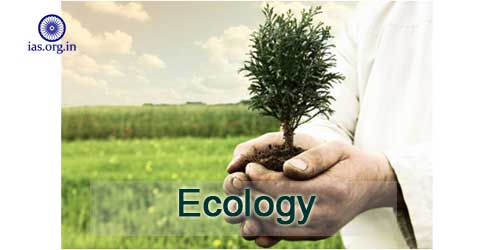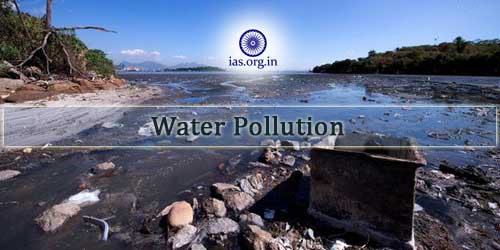Water, the basic necessity of life, has its use in agriculture, household and industry; however due to disposal of domestic wastes and industrial effluents and use of fertilizers and pesticides in agriculture the problem of water pollution is now getting the much needed attention from the governments across the world.
The most common purposes of using water are for drinking, washing, cooking etc, for which pure and clean water is required. But the natural water we got through rain, snow, hail, etc gets polluted by natural processes like washing away of the decomposed vegetable and animal of water gas in the main stream of water and as well as by human activity.
Also Read: Startling Facts about Pollution
Types of Water Pollution
Polluted water contain various signs like it may have a bad taste or offensive smell, may have oil or grease floating on the surface or has an unpleasant colour that depends on the place of storage of storages, water pollution can be divided into five different types:
(i) Ground Water Pollution
Major percentage of water, that is (> 90 %), is available in the form of ground water, means below the surface of the earth. The remaining is available in lakes, streams, rivers, ponds, etc. Only 2 % water is available as soil moisture that is essential for the plants to grow. The pores of the earthy materials acts as a filter for the water which collects on the surface and make it pure ground water. For this, well water is used for various domestic purposes in rural households.
This ground water is polluted due to the disposal of domestic and also the use of fertilizers and pesticides in farming techniques. Various harmful substances dissolve in rain water and pass through soil to enter the ground water and contaminate it.
(ii) Surface Water Pollution
Any form of water present on the surface of earth is called the surface water. The surface water is in direct contact with the gases found in atmosphere of earth like CO2, CO, SO2, NOx, H2S etc. which acts like pollutant and pollutes surface water by dissolving in it. The surface water also gets polluted by industrial, municipal, agricultural and household wastes including decomposed plants and animal matter and radioactive materials.
(iii) Lake Water Pollution
Lakes contain a large part of the water area on earth that can get contaminated in a number of ways. Organic wastes from hills and toxic effluents from urban areas flow into the lakes. Industries throw their wastes into the lakes nearby which polluted the lake water. Sewerage treatments plants discharge toxic organic matter into the lake. Also, dumping of huge amount of sediments and inorganic agricultural nutrients also pollutes the lake water.
(iv) River Water Pollution
River water is polluted with industrial discharges such as that of paper, textile, rayon, fertilizers, pesticides, detergents, drug industries and refineries. People also through domestic sewages in the river that contaminates the river water. Polluted water-borne diseases such as dysentery, cholera, typhoid, jaundice, etc.
(v) Sea Water Pollution
Sea Water is polluted through the discharge of urban sewage, split, plastics, flow of pesticides and toxic chemicals, radioactive wastes, sanitary and kitchen waste etc. Apart from these, the main cause of the sea water pollution has been the spreading of oil which is called oil spill or oil slick. This happens when oil tankers open accidently in the sea, oil leakages from pipelines, or by discharge of oily wastes from tank washings.
In India, oil spill, means spreading of oil into sea, occurred in Bombay on 17th May, 1992 due to rupture of pipeline which damaged the marine life and ecosystem that surrounded it. It damaged fishery by making the fishes unable to respire by clogging their grill slits.
Must Read: Pollution- Definition, Aspects and Solution
Sources of Water Pollution
- Sewage and domestic wastes – These are human excreta, sewage slued, soaps and detergents, untreated municipal sewages, etc.
- Industrial effluents – They contain toxic and hazardous chemicals such as aldehydes, phenols, oils, greases, dyes, kerosene, acids, toxic metals such as Cd, Pb, Hg, etc. Chemicals like cadmium and mercury damages the kidneys and lead damages liver, kidneys, brains and nervous system. The polluted water with a PH level lower than 3 in dangerous for the aquatic life.
- Agricultural discharges – They include fertilizers, pesticides and insecticides etc.
- Siltation – The process of mixing soil or rock particles into water is called the siltation. The soil particles produce turbidity in water by mixing with it and hinders the free movement of growth and productivity. This problem is very common in hilly areas.
- Thermal pollutants – The thermal pollutants are sources that results in the increase of temperature of the flowing water and then adversely affects the aquatic life. The thermal power plants, nuclear plants and industries having cooling requirements contains the thermal pollutants. Municipal sewage also contain thermal units causing water pollution.
- Radioactive discharge – They include nuclear reactor wastages which enter into water through different sources like nuclear power plants, nuclear tests, nuclear wastes etc which emits the radiation that cause various water hazards.
- Polychlorinated biphenyis (PCBs) – these compounds are used as fluids in transformers and capacitors which cause skin diseases when come into the contact of atmosphere as they are resistant to oxidation. They have been recently added into the list of water pollutants.
Don’t Miss: Types of Pollution
Classification of Water Pollutants
Synthetic detergents: The are used in almost every household and form a major source of water pollution. Synthethic detergents that are used as cleaning agent consist of a surface active agent, technically called surfactant, that is usually sodium phosphate (polyphosphate) that is added to remove hardness.
Water polluted with surfactants create a number of problems; some important ones as follows:
- They stabilize the colloidal impurities that do not heap to settle down.
- They do not undergo biodegradation.
- They prevent oxidation of organic compounds like phenol because they create an envelope around them, therefore, they create obstacles in treatment of waste water.
- They generate stable foams in rivers.
Must Read: Solid Waste Management (SWM) : Growing for Solutions
Pesticides
These organic compounds are used, as generally understood, to protect plants from pests. These organic compounds, Pesticides, flow into lakes and rivers along with the rain water and create serious problems to aquatic as well as human life.
It is important to know that apart from being used in saving plants from pests, pesticides are also used to prevent the growth of weeds – Unwanted plants which grow along with the main plant.
Pesticides, in fact, are mild poisons. They are better called herbicides because weeds are a kind of plants and not pests and these chemicals are used to remove pests. Biocide is the general term used for pesticides and herbicides. Therefore, pesticides include herbicides (to kill weeds), insecticides (to kill insects), rodenticides (to kill rats), fungicides (for fungi or mould), etc.
Infectious agents/Disease Causing agents
The municipals waste water and the municipal sewage contain bacteria (pathogenic microbes) of micro- organisms that cause diseases. These bacteria contaminate the potable water and cause diseases in human and animals.
The sources of the municipal sewage and the municipal waste water are: hotels, restaurants, residential areas, slums and continuing faeces and urine of infected patients.
Don’t Miss: Iron Deficiency Diseases





